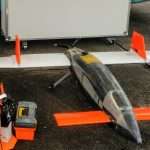Retired Col. Vinayak Bhatt, an expert in satellite imaging, found this second missile silo using data from Google Earth. He stated that development on the new missile silo is moving quickly. According to Bhatt, this new missile silo could house Pakistan’s deadly Ababeel missile, which is armed with MIRV technology.
It is thought that Pakistan obtained MIRV technology with the assistance of India’s main adversary, China. This missile has a range of up to 2200 kilometres. In this manner, the missile can strike the entire country of India.
#Pakistan #nuclear forces increasing its capacity & capability.
New #silos constructions in full swing.
Second site of silos construction identified.
These could be new basings for #Ababeel #MIRV developed with proliferator friend #China’s help. pic.twitter.com/cneJ6TbBXd— 卫纳夜格.巴特 Col Vinayak Bhat (Retd) @Raj47 (@rajfortyseven) August 26, 2022
Experts believe that many warheads can be carried on a single missile using MIRV technology.
Ababil
The Ababil is a solid-fuel, three-stage, intermediate-range ballistic missile with a reported maximum range of 2,200 km. Pakistan’s claims that Ababil carried his MIRV (multiple independently targetable reentry vehicle) technology used have not been confirmed and are the subject of controversy.
Reportedly, the missile can carry both nuclear and conventional warheads.

Suspected MIRV
Some experts have expressed skepticism whether Pakistan has actually overcome the various technical hurdles required for her MIRV missile. MIRV warheads are typically much smaller than unit warheads and must be further miniaturized. It is not known whether the country has produced nuclear warheads miniaturized for use in MIRV.
Another obstacle, the development of post-boost controlled vehicles or “buses,” includes “experts in the design and manufacture of small engines, the manufacture of propellant and gas tanks, the precision manufacture of valves, high pressure lines, quality control, and liquid shelf life.
Nonetheless, Pakistan has demonstrated other significant his MIRV-related technology in the past. These include, among other things, the ability to deploy small liquid-fueled retreat-stabilized missiles for post-separation attitude control systems (PSACs).
Pakistan has reportedly deployed his PSAC on Shaheen-1, Shaheen-1A, and Shaheen-2 missiles. China, which presumably tested its first MIRVed missile days after Ababil flew, is suspected of providing technical assistance to Pakistan.
Also Read: Pakistan conducts successful test launch of Guided Multiple Launch Rocket System Fatah-1
![]()

Bashir Ahmad is a medical student working as a freelance writer, graphic designer and social media manager for Pakscience, Scientia Pakistan and many other platforms. Tap on the social media links below to connect with him.




